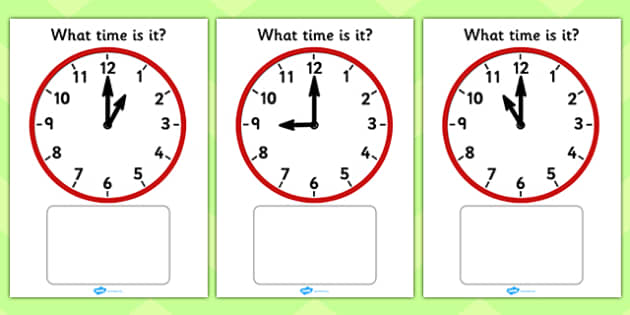

For example, if someone says "midnight on Sunday," regardless whether they use the 12-hour clock or 24-hour clock it is not possible to know with certainty whether midnight on Sunday refers to the time at which Sunday is ending or beginning without being told. Before 12 Oclock each hour is labelled AM and after 12 oclock each hour is labelled PM. Customize the design of the clock app to your. Whats the difference between digital and analog (Oclock) time Analog or oclock time is presented in 12-hour intervals on the face of a clock, this means that there will be two of each hour in the day. Neither timekeeping method is perfect however, and one of the potential sources of confusion that both methods are susceptible to occurs at midnight (00:00 or 24:00 in the 24-hour click and 12:00 AM in the 12-hour clock). The biggest and the boldest The digital clock for your every need and activity. None of the hours in the 24-hour clock repeat, so there is no risk of confusion. The main benefit of using the 24-hour clock system is the lack of ambiguity, since the 12-hour clock requires the specification of AM and PM, and can sometimes lead to confusion if the speaker (or writer) does not specify whether a given time occurs before or after noon. You may now look at actual values from that particular PQube, including stats and trends in csv format.Note that midnight in the 24-hour clock can also be written as 24:00. From the map select one of the PQubes showing a green light (preferably select the one from PQube in Ontario). This also explains why some clocks do better than others in the same location: they simply have better filters in the clock circuit to filter out these transients.Īdding a suitable filter between the clock and mains should improve the accuracy of the clocks.Ĭlick on "test drive a pqube". The clocks may count these transients as additional clock pulses and thus advance faster than they should. every time the refrigerator starts or stops). At your cabin at the lake the mains supply probably come via long distance lines and transformers which act as low pass filters, thus letting the clock "see" mainly a quite clean 50 Hz or 60 Hz signal.Īt your main location - I guess in a populated neighborhood - the mains is probably distorted by lots of transients (e.g. The mains voltage ideally is a pure sine, but in reality it shows distortions (transients, voltage dips, high freqency components etc - look up "power quality" if you want to know more about this).


What is likely is that one location has a "cleaner" mains than the other. a month the mean frequency is rather exact. The period from 12 AM to 12 PM is the first half of the day, and the period. Unlike the 24-hour clock, which spans the entire day, the 12 hour clock only spans 12 hours. They do this by increasing or decreasing the frequency for some time such that over a period of e.g. In the US, the 12-hour clock is typically used when discussing the time of day, except in certain areas such as the military, navigation, tourism, computing, or in hospitals. Generally, in the long term the utility companies usually try to keep the mean frequency very stable. On short terms there are fluctuations in frequency, but again they are the same throughout the grid. If there were variations in frequency this would lead to uncontrolled power flow through the grid due to the accumulating phase difference between the locations. The reason is that within one grid the frequency has to be the same for all locations. Unless the locations are very far apart and on different grids. Click to expand.While it is a matter of fact that many clocks are timed off the mains frequency, it is unlikely that variations of the mains frequency are the culprit for clocks advancing too fast (it also doesn't explain why some clocks do better than others at the same location).


 0 kommentar(er)
0 kommentar(er)
